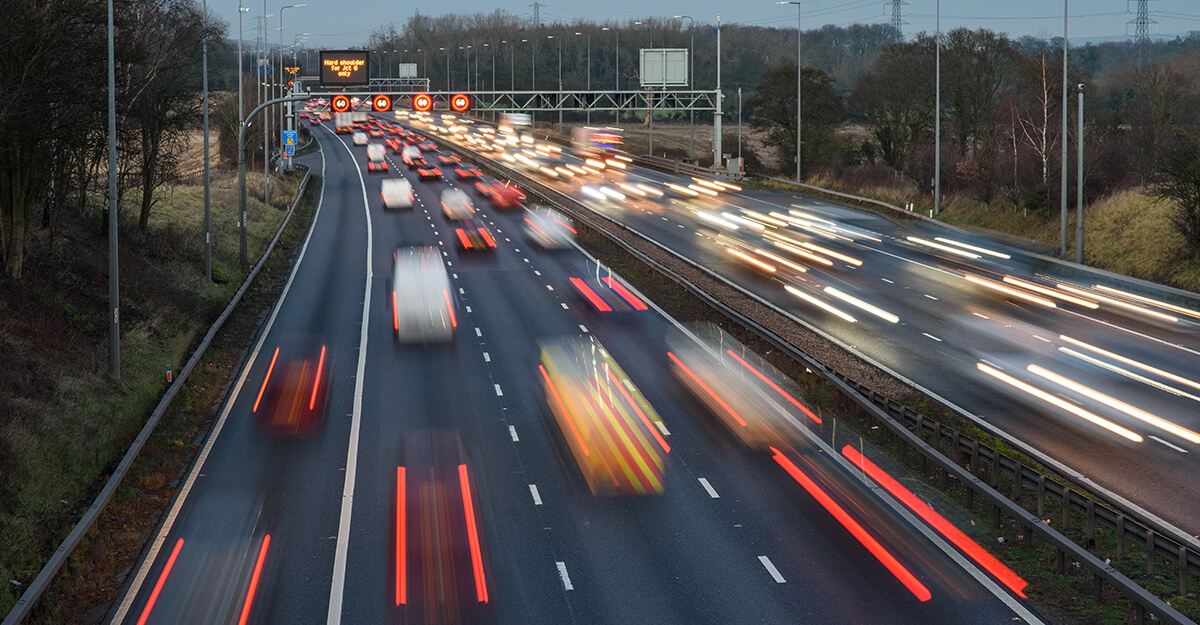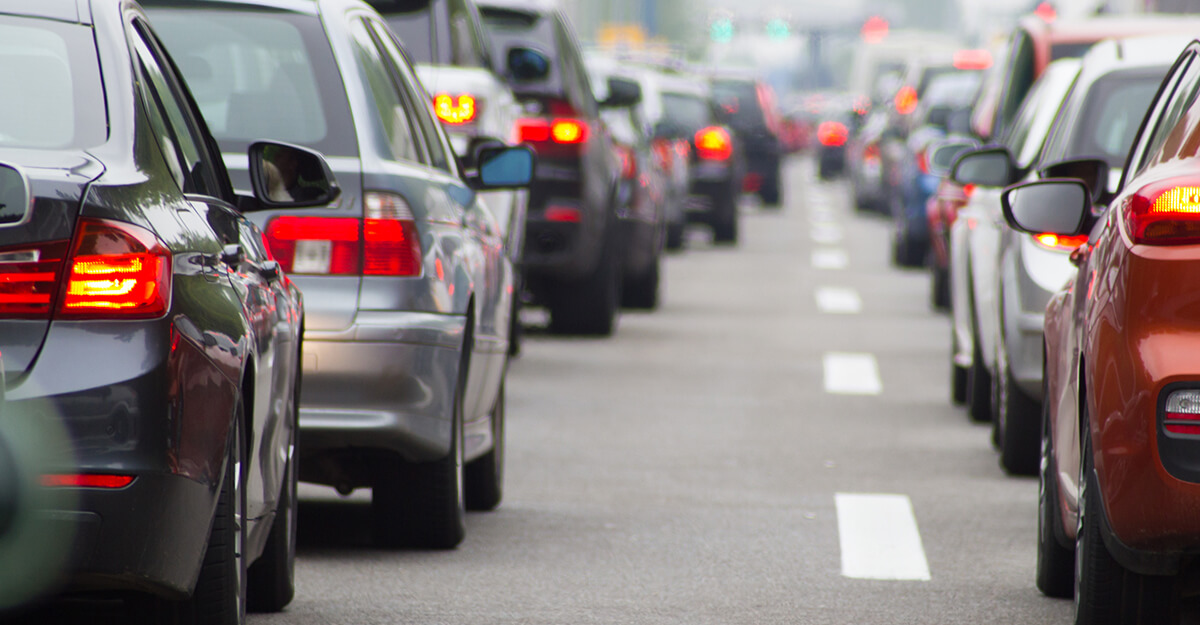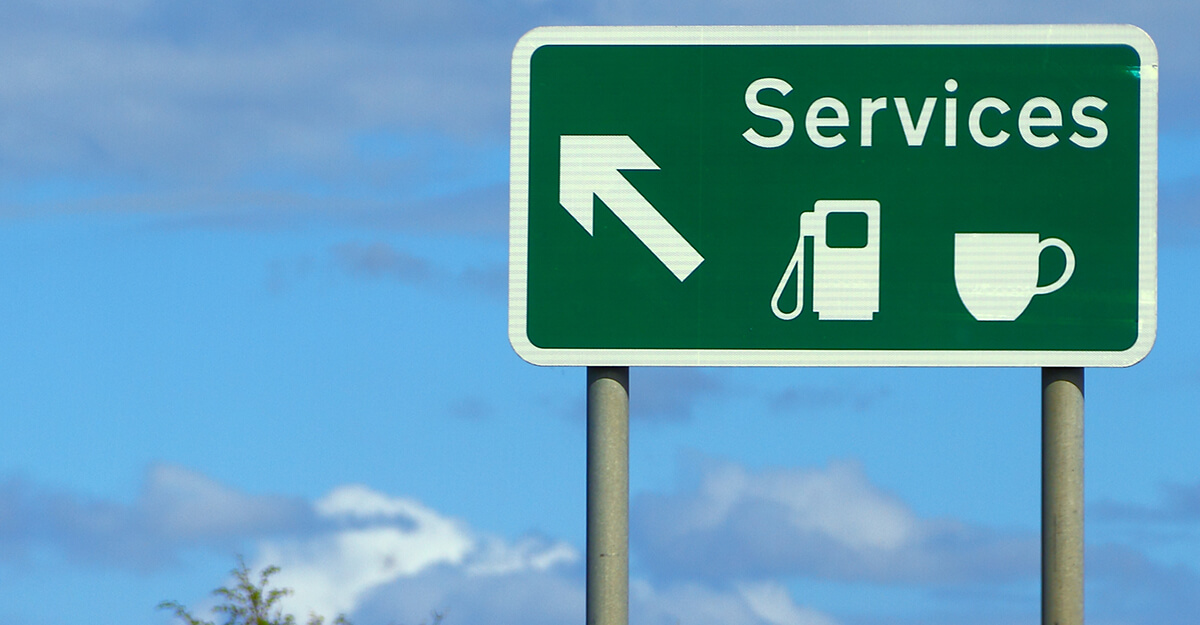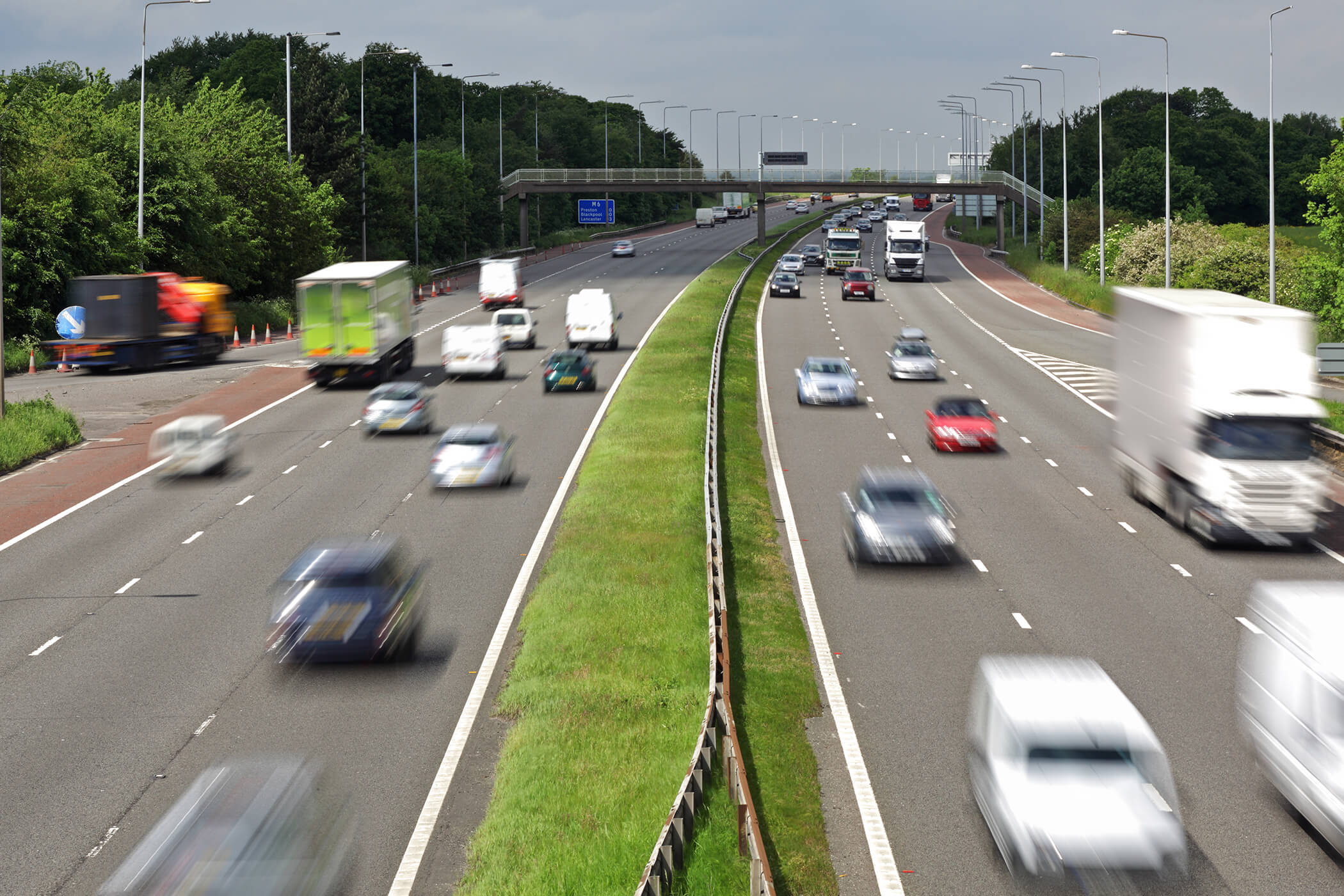With over 50 different motorways in the UK, it is more than likely that you’ll have to tackle this particular road type at some point in your driving life. While motorways are designed to be some of the safest roads in Britain, they can prove to be considerably more high-paced making the idea a little overwhelming for many drivers. Until recent years, learners were not permitted on the motorway, which means that many of us have never been given expert tuition on how to successfully achieve safe motorway driving and feel confident behind the wheel.
Safe Motorway Driving: The Top Tips
According to research by This Is Money, one in five drivers in Britain refuse to drive on the motorway; some of the most common reasons are lack of confidence, speed of travel and safety risks when inexperienced. Particularly for new drivers, tackling a motorway for the first time can be a little challenging, but you would be surprised how quickly you get used to the motion.
One of the best ways to boost driving confidence is to research beforehand and familiarise yourself on what to expect. Spend time browsing through possible routes to your destination and determine which would be best suited to you. Aim to begin with the most comfortable option, just to get you settled in and relaxed. Especially if it is your first time on a motorway, bring along a trusted friend or family member. Choose someone who will keep you calm and give you valuable words of support if you begin to get a little flustered. Once you have chosen your route and your favourite passenger, you can begin to get to know the best safety practices, why not start with our top eight?
1. Understand How Lanes Work
First things first, let’s get to know precisely how motorways work, beginning with the all-important lanes. A standard motorway in the UK features three lanes. Some may have more for congestion reasons, but any additional lanes will always be clearly signed, so you know exactly what to expect. The left-hand lane is for normal speed driving; both the middle and right-hand lane is for overtaking – this is all you’ll need to remember when it comes lanes. Although, it is essential to keep in mind that if you hog the middle or right-hand lane, you could receive a fine. Even if you see others do it, don’t be tempted!
Larger, slower moving vehicles such as 7.5-tonne trucks, lorries and trailers are not permitted in the right-hand lane of the motorway, otherwise known as ‘the fast lane’. Due to their size and weight, vehicles in these categories must stick to lower speed restrictions meaning that they are unable to overtake at a high-speed; therefore, would cause safety risks if in a faster-paced lane.

2. Tackle The Slip Road
Next is the slip road; these are used to join the motorway. Slip roads do take a considerable amount of concentration. It is often one of the biggest culprits for putting drivers off tackling the motorway.
Regardless of the motorway that you are joining, you will always enter via the slip road, and this will take you straight into the left-hand lane. The purpose of the slip road is to enable drivers to build up speed before merging. As soon as you get onto the slip road, keep moving while continuously engaging with your wing mirror so that you can assess the oncoming traffic. Drivers already on the motorway will begin to either change lane or form a gap so that you can merge. You may need to adjust your speed and slow down a little if you cannot see a space to join, but you should never heavy brake. The only time that you should ever need to stop on a slip road is if there is standstill traffic.
For more details on how to join the motorway, take a look at Driving Test Success.
3. Overtake With Care
Having many years of experience specialising in car body repairs in Milton Keynes, we can confirm that overtaking is one of the biggest causes of a collision on the motorway. While the majority of drivers are safe and will overtake with care, you are likely to come across the odd careless driver. With this in mind, vigilance remains vital.
If you are overtaking another driver, on the other hand, there is a particular sequence you must follow to ensure that you pass others with care. The Highway Code states that you can only overtake in the middle and right-hand lane, never undertake using the left-hand lane. You must, again, use your wing mirror to assess the oncoming traffic and determine whether there is a safe gap for you to move into. Don’t forget to also check your blind spots as there may be a motorcyclist. Once the coast is clear, use the ‘mirror, signal, manoeuvre’ procedure to move into the lane and overtake.
4. Never Tailgate
Tailgaters are every driver’s worst nightmare, and we’ve got to be honest with you, it’s only going to get worse when using the motorway. We understand that, at times, the motorway can get congested, which means you drive closer to the car in front of you due to the low speed. However, as soon as the pace picks up, you should always stick to the two-second rule. The two-second rule relates to the distance you must retain between you and the vehicle in front of you. The rule aims to allow you enough reaction time if they were to emergency brake.
If you are driving behind a larger vehicle such as a lorry or truck, we strongly recommend leaving a little extra following distance as you would typically do so. Blinds spots when driving a larger vehicle are increased, which means that you could quickly become camouflaged. Allowing additional distance will also stop you from missing any road signs such as changes of the speed limit, countdown markers and warnings.

5. Always Remember Mirrors
Where tailgaters are your nightmare, mirrors are your best friend; they are the most effective way to stay on top of what is going on around you. Motorways are super fast-paced, which means that regularly glancing at both your interior and exterior mirrors is imperative in remaining safe.
Before setting off on your journey, leave a little extra time to check the condition, cleanliness and positioning of your mirrors. If you notice that your mirrors are looking slightly grubby, then give them a quick clean before leaving. Wiping them down with a microfibre cloth should work effectively, and you can bring this along with you in case they need an extra clean ready for the drive home. Just before you ignite the engine and leave, take a look in your mirrors to determine whether they are in the best position to maximise your vision. If they’re not, then you can use this handy guide on Driving Tests to adjust them for a clearer view.
6. Use The Three-Marker Countdown
One of the most useful features of a motorway is that they are filled with handy signs that will notify you on absolutely everything you need to know. As you are approaching a motorway exit, you will notice a sequence of three countdown markers. Each sign indicates the distance you are away from the slip road to exit the motorway, so use this to your advantage if you know that you need to leave soon.
The first countdown marker will be placed at 300 metres from the exit; here, you should begin to indicate and gently slow down. Again, all slip roads to leave the motorway are merged to the left-hand lane, so always make sure that you are in this lane when approaching your exit. The second sign will be at 200 metres, and the third will be at 100, in which you will begin to exit.
These signs should be familiar to you, especially if you took your driving lessons in London or another major town or city. The reason for this is because these signs are found on the exit of all A roads which you will encounter if you learnt to drive in a city, or along any A roads.
7. Take Plenty Of Breaks
While you may feel as if all you are doing is leisurely driving at a steady speed, you would be surprised how much concentration driving on the motorway takes. Tiredness can be detrimental when on the roads and dramatically reduces your reaction time, which means regular breaks are imperative. If you are planning a long journey, a break at least every two hours must be scheduled to ensure that you can remain vigilant. Allocate no less than 15 minutes for each break; you could perhaps even use the time to grab a bite to eat.
Regardless of how you decide to spend your break, ensure that you are outside of the car, stretching your legs and getting some well-needed fresh air. You can use the Motorway Services Online website to search for service stations on your way to plan ahead!

Stay Vigilant And Safe On The Motorway
Driving on the motorway should never be a scary thought. We have been providing drivers with car bodywork in Aylesbury and car accident repair in Towcester for many years, so are always hearing new stories from new and experienced drivers. Even after all of the accident repairs we have completed, we can still reliably say that motorways remain some of the safest roads in Britain. Once joined, they are simple straight roads; no roundabouts or traffic lights to worry about. Always focus on remaining the safety drivers you can be using your mirrors, along with road signs to navigate problem-free.
If it is your first time on the motorway, take your time. Bring along a trustworthy passenger, wear something comfortable and spend time familiarising yourself with the route beforehand. We promise that you will be fine!


